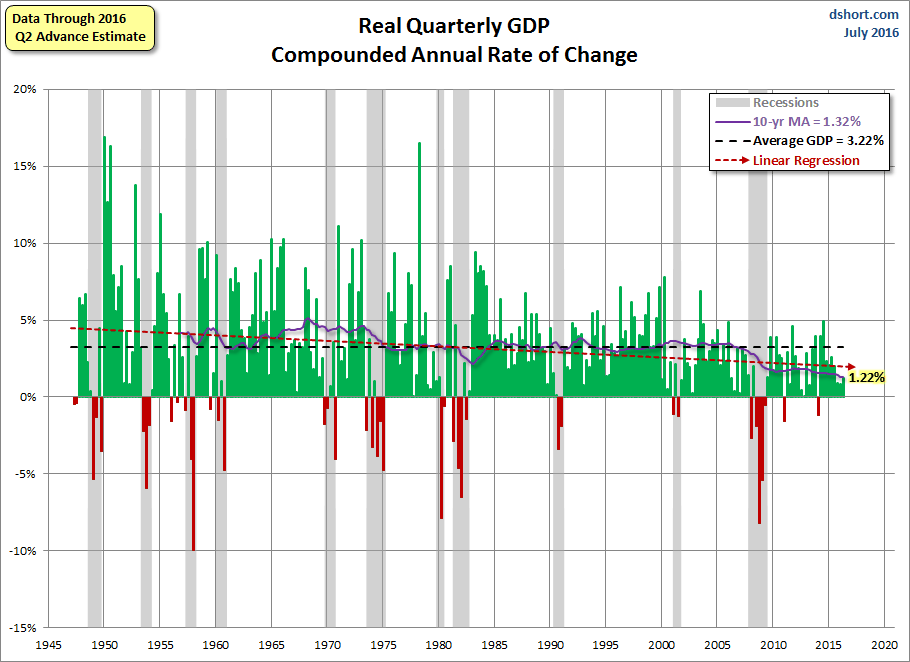Courtesy of Doug Short.
The Advance Estimate for Q3 GDP, to one decimal, came in at 3.5 percent, down from the Q2 Third Estimate of 4.6 percent but better than mainstream econonmists’ expectations. The Wall Street Journal’s survey of economists had a median, mean and mode of 3.2 percent. Investing.com had a slightly lower forecast of 3.0 percent.
Here is an excerpt from the Bureau of Economic Analysis news release:
Real gross domestic product — the value of the production of goods and services in the United States, adjusted for price changes — increased at an annual rate of 3.5 percent in the third quarter of 2014, according to the “advance” estimate released by the Bureau of Economic Analysis. In the second quarter, real GDP increased 4.6 percent.
The Bureau emphasized that the third-quarter advance estimate released today is based on source data that are incomplete or subject to further revision by the source agency (see the box on page 3 and “Comparisons of Revisions to GDP” on page 5). The “second” estimate for the third quarter, based on more complete data, will be released on November 25, 2014.
The increase in real GDP in the third quarter primarily reflected positive contributions from personal consumption expenditures (PCE), exports, nonresidential fixed investment, federal government spending, and state and local government spending that were partly offset by a negative contribution from private inventory investment. Imports, which are a subtraction in the calculation of GDP, decreased.
The deceleration in the percent change in real GDP reflected a downturn in private inventory investment and decelerations in PCE, in nonresidential fixed investment, in exports, in state and local government spending, and in residential fixed investment that were partly offset by a downturn in imports and an upturn in federal government spending.
The price index for gross domestic purchases, which measures prices paid by U.S. residents, increased 1.3 percent in the third quarter, compared with an increase of 2.0 percent in the second. Excluding food and energy prices, the price index for gross domestic purchases increased 1.5 percent, compared with an increase of 1.7 percent. [Full Release]
Here is a look at GDP since Q2 1947 together with the real (inflation-adjusted) S&P Composite. The start date is when the BEA began reporting GDP on a quarterly basis. Prior to 1947, GDP was reported annually. To be more precise, what the lower half of the chart shows is the percent change from the preceding period in Real (inflation-adjusted) Gross Domestic Product. I’ve also included recessions, which are determined by the National Bureau of Economic Research (NBER).
Here is a close-up of GDP alone with a line to illustrate the 3.3 average (arithmetic mean) for the quarterly series since the 1947. I’ve also plotted the 10-year moving average, currently at 1.6 percent.
Here is the same chart with a linear regression that illustrates the gradual decline in GDP over this timeframe.
A particularly telling representation of slowing growth in the US economy is the year-over-year rate of change.
And for a bit of political trivia, here is a look at GDP by party in control of the White House and Congress.
In summary, the Q3 GDP Advance Estimate of 3.5 percent beat the forecast of most mainstream economists and reinforces the prevailing view that the Q1 -2.1 percent GDP contraction was a weather-related fluke.








